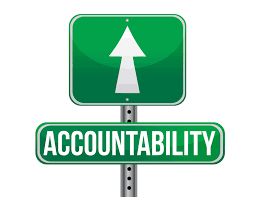Mark* was doing his best to remain calm, but his frustration was boiling over. Once again, he was talking with Bill about the performance of the team and how it just wasn’t good enough. “Honestly?” Bill said. “I didn’t know our team was responsible for that.”
That’s when Mark nearly lost it. “Bill, we’ve talked about this before.” Bill was silent for a moment and then he stammered out a weak defense that Mark promptly tore apart. Later, when Mark and one of our team members were debriefing the conversation, he asked us a question that we have heard countless times from countless leaders.
“How do I get my team to be more accountable for results?”
Accountability isn’t just about completing tasks, shouldering the blame when things go wrong, or admitting fault. It’s deeper than that. It’s about keeping promises and owning up to results. It’s about stepping up with initiative and thoughtful, strategic follow-through.
Accountability matters from top to bottom in an organization. Without everyone following through on their commitments, even the highest-ranking executives can’t fully embody accountability. It’s something we’ve grappled with firsthand. Leaders often find themselves directing, questioning, or pleading with their teams. They might even resort to yelling, acting passive-aggressively, or feeling frustrated—all to ensure accountability.
None of those approaches are effective. So, how can we cultivate accountability in those around us? It starts with bringing clarity in five key areas:
- Establishing Clear Expectations: Start by openly communicating what you expect from your team. Define the desired outcome, the metrics for success, and the approach to achieving it. Remember, it’s not just about your ideas; encourage input from your team members. Engage in genuine dialogue and ensure mutual understanding by summarizing key points verbally. While writing down a summary is helpful, discussing it aloud is essential for alignment.
- Assessing Clear Capability: Identify the necessary skills and resources for success. If someone lacks what’s required, explore ways to bridge the gap. Can they acquire the necessary skills? If not, consider delegating the task to someone else to prevent setting them up for failure.
- Implementing Clear Measurement: Leaders often face surprises when failures occur. To avoid this, establish clear, measurable milestones during the expectations conversation. These milestones should have objective targets and be regularly reviewed. If any targets slip, address them immediately by brainstorming solutions, identifying fixes, or adjusting schedules to get back on track.
- Providing Clear Feedback: Honest, ongoing feedback is crucial for development. Team members need to know where they stand. If expectations, capability, and measurement are clear, delivering feedback becomes easier. Is the person meeting their commitments? Are they collaborating effectively with others? If they need to enhance their skills, are they on the right track? Remember, feedback should flow both ways. Is there something you can do to support them better? Offer feedback weekly, prioritizing helpfulness over mere niceties.
- Establishing Clear Consequences: If you’ve addressed the previous points clearly, you’ve likely done what’s needed to support performance. At this stage, you have three options: revisit, reward, or release. If there’s still a lack of clarity, revisit the steps. If the person succeeds, reward them accordingly. However, if someone consistently fails to be accountable despite your efforts, it might be time to consider a change in roles or, in extreme cases, parting ways.
These principles form the foundation of a culture centered around accountability. Their power lies in their synergy as a cohesive system. If even one is overlooked, accountability can slip through the cracks.
When we walked Mark through these principles, he eventually recognized the gaps with Bill. While Mark’s expectations were clear, it became evident that Bill’s capabilities were lacking, and that the leadership team didn’t provide clear measurements—crucial aspects that they hadn’t tackled before. Once they addressed this gap, Mark could provide Bill with the necessary support and coaching, all while keeping a closer eye on milestones and offering feedback.
Remember the core question we started with, the one that plagues so many leaders: “How do I get my team to be more accountable for results?” Now there’s an answer: It depends. Which of the five key areas have you neglected?
*Name changed to protect client anonymity
Reflection: Take a moment to consider if there’s someone in your professional circle who may be falling short in their role. Have you taken the necessary steps to provide clarity on each of the five key areas outlined?


















